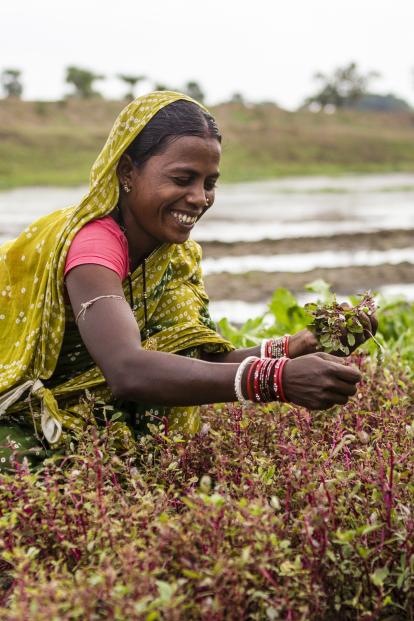
Sustainability and Resilience
Principle 4
Guidance and Resources
UN Common Guidance on Helping Build Resilient Societies (2020)
UNDP: Putting Resilience at the Heart of Development (2015)
UNDP Global Toolkit on the 3x6 approach: Building resilience through jobs and livelihoods (2016)
Mainstreaming Environmental Sustainability in Country Analysis and the UNDAF (UNDG)
Capacity Development for Environmental Sustainability: Practitioner's Guide (UNDP)
Overview
Strengthening the resilience of societies to the impact of shocks, disasters, conflict and emergency situations, and the sustainable management, conservation and rehabilitation of natural habitats (and their associated biodiversity and ecosystem functions) are fundamental to UNDP's efforts to develop and implement sustainable development pathways. UNDP seeks to address poverty and inequality and to reduce vulnerabilities while maintaining and enhancing natural capital.
UNDP acknowledges that conflicts and environmental and disaster related risks and their effects hinder the implementation of the 2030 Agenda and integrates social, environmental and economic resilience and sustainability considerations into its programmes and projects to build resilience and achieve sustainable development. In line with its Strategic Plan, UNDP supports Programme Country efforts to reduce risks and vulnerabilities associated with shocks and hazards (whether from socioeconomic or natural causes), climate change, violence, conflict, political and social instability, or economic volatility.
In designing development cooperation activities, UNDP seeks to support Programme Countries and implementing partners to identify opportunities to advance sustainability and resiliency dimensions of development initiatives and to strengthen environmental management and protection.
UNDP uses and promotes a precautionary approach1 to significant social and environmental challenges and requires application of the mitigation hierarchy to first avoid potential adverse impacts to people and the environment, or where avoidance is not possible, to then minimize, mitigate, and as a last resort, offset and compensate for potential residual adverse impacts.
UNDP assists Programme Countries, implementing partners and responsible parties to integrate low-emission, climate-resilient objectives into national and sectoral development plans, and ensures that supported programmes and projects enhance climate resiliency and avoid unwarranted increases in greenhouse gas (GHG) emissions, instead enhancing efficiency and reducing GHG intensity.
UNDP’s disaster risk reduction and recovery work aims to deliver risk-informed development through actionable risk information, risk governance, early warning systems and preparedness, recovery and local (urban and community level) action. By working with Governments and partners towards ‘risk-informed’ national, local and sectoral development planning processes, UNDP helps build the resilience of communities and nations. This includes identifying and addressing the interconnections among issues related to the environment, human rights, conflict, crises and vulnerability, where relevant.
| Footnotes: |
|---|
| (1) See Principle 15 of the Rio Declaration on Environment and Development, (1992) noting that the lack of full scientific certainty shall not be used as a reason for postponing cost-effective measures to prevent serious threats of environmental degradation. |
